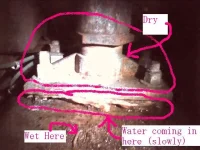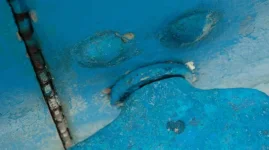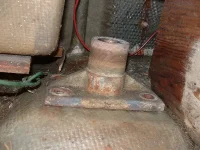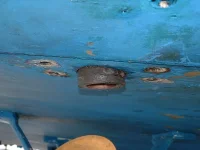first230sl
Active member
- Joined
- Apr 12, 2005
- Messages
- 145
- Hatteras Model
- 58' YACHT FISHERMAN (1970 - 1981)
My port rudder post area was leaking, so I tightened up the stuffing box and now the top part is dry. Unfortunately, it appears that the stuffing box was not the only leak. I still seem to have a bit of a leak coming from the area between the hull and the bottom flange of the stuffing box/rudder post holder (sorry - don't know the correct name).
A picture is wqorth 1000 words so here it is (sorry for the poor image quality - I only had my phone with me and it, aTreo 600, has a crappy camera).
My question is whether it is simply OK to build up the area where the hull meets the flange with epoxy or 5200 to stop the leak - or does something more need to be done? I am not concerned - there are four bolts holding the flange in place. Should I be more worried than I am?
Thanks!
Murray
A picture is wqorth 1000 words so here it is (sorry for the poor image quality - I only had my phone with me and it, aTreo 600, has a crappy camera).
My question is whether it is simply OK to build up the area where the hull meets the flange with epoxy or 5200 to stop the leak - or does something more need to be done? I am not concerned - there are four bolts holding the flange in place. Should I be more worried than I am?
Thanks!
Murray
Attachments
Last edited:





